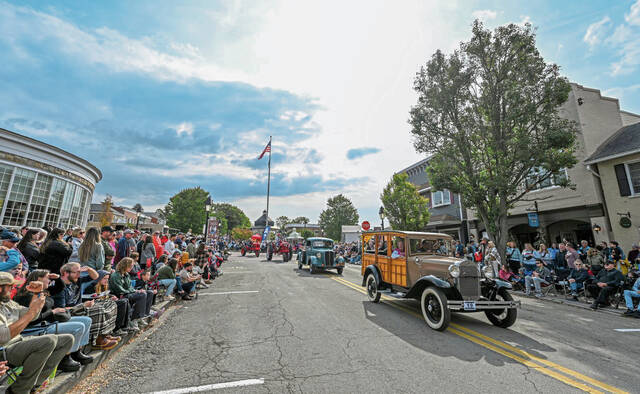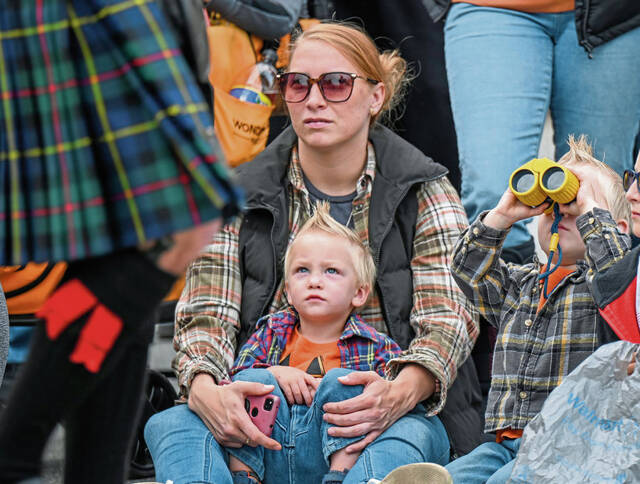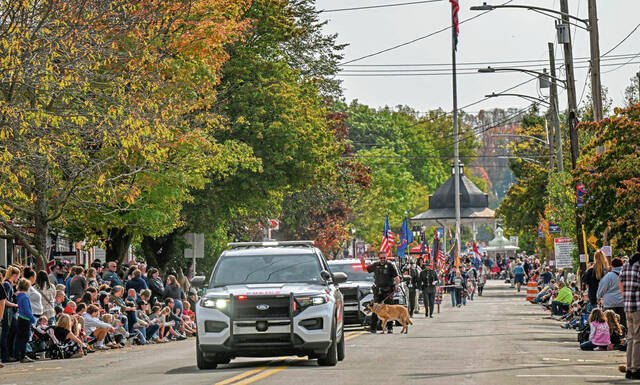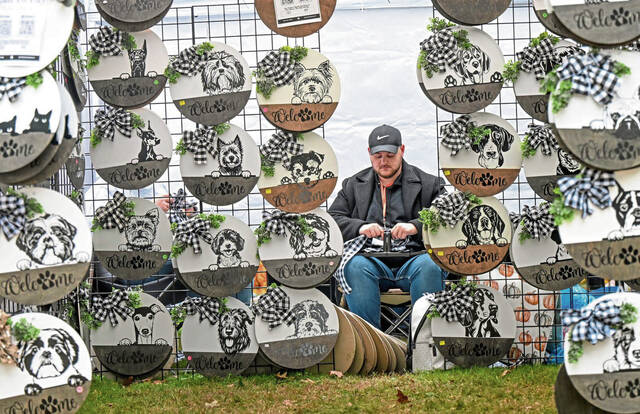Fort tours, battle reenactments offer chance to explore reason for Ligonier festival
Fort Ligonier Days pays tribute to the 18th century British outpost that lent its name to the modern town of Ligonier.
But, full appreciation of the festival’s origin doesn’t appear to be widespread among those who are drawn to the event, judging from a random sampling Saturday of visitors who attended the second of the celebration’s three days.
“I think it was all part of the Revolutionary War,” Michael Tiani of Leechburg said of the reconstructed fort he visited in years past, when a friend was a reenactor there. “It’s just interesting seeing the guys dressed up” in period uniforms.
For one thing, Tiani had the right century in mind. A visitor from Pittsburgh wondered instead if Ligonier might be home to a Civil War-era fort.
Blake Barnhart, 12, of Fayette County’s Bullskin Township had the history of Fort Ligonier down pat. “It was in the French and Indian War,” he said.
Other festival visitors were aware that Fort Ligonier played a crucial role in the development of Pittsburgh farther to the west. Some knew the festival commemorates a battle, though they weren’t sure of the details.
The battle in question took place Oct. 12, 1758 — when the British defenders at Fort Ligonier repulsed an attack by French foes. The occupying French fled as British troops advanced toward Fort Duquesne, which was renamed Fort Pitt and provided the foundation for the city of Pittsburgh.
Fort Ligonier was “the gateway to the west and led to the existence of Pittsburgh,” said Mary Manges, executive director and former education director at the historic site.
“Most people know that George Washington was here,” then a young officer serving with the British troops, said Manges. “They might have learned a paragraph or two in their history books about the French and Indian War, but they don’t really have a deep knowledge of it.”
With the masses that gather in Ligonier for Fort Ligonier Days and battle reenactments that are staged, the fort itself may welcome upwards of 2,000 people for tours on Saturday — the busiest of the three days, Manges said. That compares to a typical visitor total of up to 150 on a normal Saturday at the fort.
“We want them to see and experience what life was like in the 18th century and understand the importance of this time period,” said Manges. “We’d love for them to see something that piques their interest and leads them to purchase a book or watch a video about the period.”
Among the more impressive artifacts in the fort’s collection are pistols that belonged to Washington.
Daniel Knorr, 4, of Somerset and his older brother David, 6, were impressed by the cannon and swords on display during their first tour of the fort.
“It’s always cool to learn a little bit more about history,” said their mother, Kaitlyn.
“Those cannon are in pristine shape,” Army veteran John Welsh enthused after visiting the fort Saturday with friend and fellow veteran Michael Wiesenbach. The pair traveled from Columbus, Ohio, to attended Fort Ligonier Days with their spouses.
Wiesenbach, who served in the Marines and the Army from 1985 to 2008, recalled visiting the fort as a child during a school trip when he lived in Irwin.
After Saturday’s return visit, he said, “It’s always amazed me how many things are still very similar yet how many things have changed.”
While military weapons have advanced many times over since the 1700s, Wiesenbach said the fort’s reconstructed underground room for storing powder was familiar.
“They called it a magazine and we call it an ammo supply point,” he said. “We still use those. They haven’t changed much over the years.”
Manges said the the fort is working to provide visitors more opportunities to interact with living history reenactors.
“Our goal from June through October is to have some type of living history going on every day of the week and have additional interpreters here on weekends,” she said. “We love for people to leave with a deeper understanding.”
Jeff Himler is a TribLive reporter covering Greater Latrobe, Ligonier Valley, Mt. Pleasant Area and Derry Area school districts and their communities. He also reports on transportation issues. A journalist for more than three decades, he enjoys delving into local history. He can be reached at jhimler@triblive.com.
Remove the ads from your TribLIVE reading experience but still support the journalists who create the content with TribLIVE Ad-Free.










